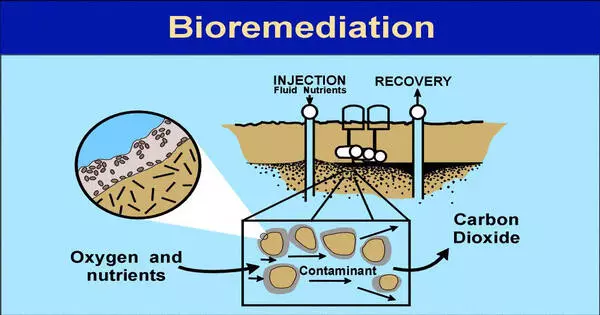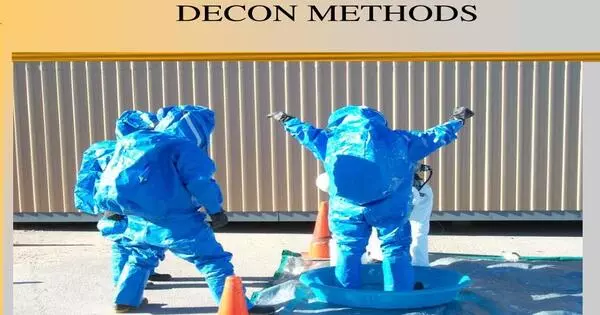To remove pollutants from soil, several decontamination procedures are utilized, and the method used depends on the type of pollutants, soil properties, and the level of contamination. A high-heat electrothermal soil remediation technology washes away organic contaminants and heavy metals in seconds while preserving soil fertility.
Filtration systems are designed to catch many dangerous compounds from water or air at the same time, while contaminants in soil can only be addressed individually or in small groups for the time being.
Rice University scientists and collaborators at the United States Army Engineer Research and Development Center (ERDC) devised a technology that could help transform soil remediation procedures from piecemeal to wholesale.
A Rice team led by chemist James Tour and researchers from the ERDC’s geotechnical structures and environmental engineering branches demonstrated that mixing polluted soil with nontoxic, carbon-rich compounds that propel electrical current, such as biochar, and then zapping the mix with short bursts of electricity flushes out both organic pollutants and heavy metals without using water or generating waste.
Our high-temperature electrothermal process can remove multiple pollutants simultaneously. This newly established method, which we called high-temperature electrothermal process (HET), is based on the flash Joule heating technique we developed a few years ago.
Bing Deng
According to a study published in Nature Communications, the electrical pulses heat the soil to 1000-3000 degrees Celsius (1832-5432 Fahrenheit) in seconds, converting organic contaminants into nontoxic graphite minerals and toxic heavy metals into vapor collected via extraction pipes. Furthermore, the process improves soil fertility, with trials demonstrating that germination rates increase by 20-30% in remediated soil.
“Our high-temperature electrothermal process can remove multiple pollutants simultaneously,” said lead author Bing Deng, a postdoctoral research associate in the Tour lab. “This newly established method, which we called high-temperature electrothermal process (HET), is based on the flash Joule heating technique we developed a few years ago. It is the first time that direct electric heating has been used for soil remediation.”
The principal pollutants in soil are heavy metals such as lead, arsenic, zinc, cobalt, copper, mercury, and nickel, as well as organic contaminants such as pesticides and microplastics. Natural phenomena such as earthquakes and flooding, in addition to manmade activity, can cause soil contamination: Toxic ash from wildfires like the one that ravaged Hawaii in August, as well as any potential industrial waste discharged by thawing permafrost in the Arctic, might contaminate massive regions of soil, necessitating large-scale decontamination processes.
Current methods of removing contaminants from soil, however, are time-consuming, costly, and logistically difficult. Surfactant leaching, for example, generates secondary waste streams and consumes considerable amounts of water and/or electricity. Better methods for decontaminating soil are crucial for greater catastrophe preparedness, making it a national security priority, according to Deng.
“This method is ultrafast, which can be really useful in addressing emergency situations,” he said.

“Typically, soil remediation technologies target only one or two heavy metals at a time, and they are often ineffective or operate at a much slower rate than electrothermal heating,” said Mine Ucak-Astarlioglu, an ERDC research chemist. “This method is very fast, water-free, and handles a variety of pollutants in soil.” “Flash Joule heating is an extremely promising technique for recovering critical metals from waste and removing heavy metals for remediation.”
According to Chris Griggs, an ERDC senior research physical scientist, polluted soil can currently be dug up and hauled away from populated areas – a “logistical nightmare” option – or it can be treated on site to prevent toxic elements from migrating into the surrounding air, water, or food supply.
“Certain contaminants might be fine – they’re not going to move. Other ones might migrate to groundwater and drinking water sources. Some could end up tainting crops, where you could have toxic heavy metals being drawn up through the roots of plants, etc.,” Griggs said. “Being able to regenerate the soil and put it right back where it was, that’s a huge advantage over existing technologies that are out there.”
A surprising effect of the rapid high-temperature treatment is that it leaves soil particle size and overall mineral composition relatively unchanged. In fact, the process improves the water infiltration rate and increases the pool of available nutrients, making the soil more fertile.
“It was surprising to us that we do not damage the soil in the process,” said Tour, Rice’s T.T. and W.F. Chao Professor of Chemistry and a professor of materials science and nanoengineering. “Plants actually like it more, because of the minerals that get freed up in the thermal cycling.”
Yi Cheng, a Rice postdoctoral researcher and primary co-author who assisted with soil property evaluation, said the technique works equally well on moist soil. “Our process is economical and environmentally friendly,” Cheng went on to say.
A lifecycle analysis is included in the paper, which demonstrates that the procedure is scalable and promises to be more energy-efficient and cost-effective than typical soil remediation practices such as soil washing or thermal desorption.
“We developed two implementation models for both off- and on-site deployment, and we are looking forward to taking this process to the next stage – field testing,” Deng went on to say. Rice and ERDC’s collaboration could aid in the technology’s transition from proof-of-concept to real-world use.
















